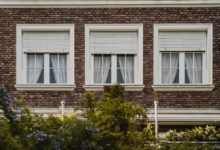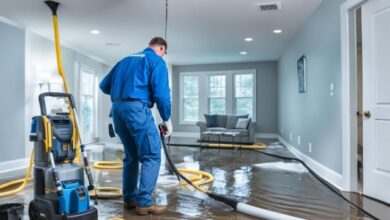Boost Your Home’s Curb Appeal with Expert Residential Painting Tips

First impressions matter, and when it comes to your home, the exterior is the first thing people notice. A fresh coat of paint can significantly enhance your home’s curb appeal, giving it a polished and well-maintained look. Whether you’re preparing to sell or simply want to improve your property’s aesthetics, expert residential painting can make a substantial difference. Here are some valuable house painting tips to help you achieve the best results.
1. Choose the Right Paint
Selecting the right paint is crucial for a long-lasting and attractive finish. When it comes to residential painting, you’ll want to consider both the type of paint and its color.
Types of Paint
- Latex Paint: Water-based and easy to clean, latex paint is durable and environmentally friendly. It’s an excellent choice for most exterior surfaces.
- Oil-Based Paint: Known for its smooth finish and durability, oil-based paint is ideal for areas prone to heavy traffic or exposure to the elements, such as trim and doors.
Color Selection
Choosing the right color can dramatically impact your home’s curb appeal. Opt for colors that complement your home’s architecture and surroundings. Neutrals like white, beige, and gray are timeless and versatile, while bolder colors like blue or green can add character and uniqueness. Consider using a color wheel to find complementary or analogous colors that create a harmonious look.
2. Prepare the Surface
Proper surface preparation is essential for a flawless finish. Skipping this step can lead to peeling, cracking, and other issues down the line.
Cleaning
Start by cleaning the exterior surfaces to remove dirt, mildew, and loose paint. A pressure washer can be highly effective for this purpose. Ensure the surface is completely dry before moving on to the next step.
Sanding and Scraping
Inspect the surface for any peeling or flaking paint. Use a paint scraper and sandpaper to remove loose paint and create a smooth surface. Sanding also helps the new paint adhere better.
Priming
Applying a primer is a critical step in residential painting. Primer creates a uniform surface, seals stains, and ensures better adhesion of the topcoat. Choose a primer that matches the type of paint you plan to use.
3. Invest in Quality Tools
Using the right tools can make a significant difference in the outcome of your house painting project.
Brushes and Rollers
- Brushes: High-quality brushes provide better control and a smoother finish. Use synthetic bristle brushes for latex paint and natural bristle brushes for oil-based paint.
- Rollers: Choose rollers with the appropriate nap length for the surface you’re painting. For smooth surfaces, use a short nap roller, while rough surfaces require a longer nap.
Painter’s Tape
Painter’s tape helps create clean lines and protect areas you don’t want to paint. Be sure to press it down firmly to prevent paint from seeping underneath.
Drop Cloths
Protect your landscaping and walkways with drop cloths to catch any drips or spills.
4. Master the Technique
Even with the right tools and paint, your technique plays a crucial role in achieving professional results.
Brushing and Rolling
- Cutting In: Start by “cutting in” around edges and trim with a brush. This involves painting a few inches from the edges to create a border for the roller.
- Rolling: Use a roller for large, flat surfaces. Apply the paint in a “W” or “M” pattern to ensure even coverage, then go over it with straight strokes to smooth out the finish.
Multiple Coats
Applying multiple coats is often necessary for a uniform and durable finish. Allow the first coat to dry completely before applying the second. This ensures better coverage and longevity.
Weather Conditions
Avoid painting in extreme temperatures or high humidity. The ideal conditions for residential painting are mild temperatures and dry weather. This allows the paint to dry and cure properly, reducing the risk of blistering or cracking.
5. Finishing Touches
Once the painting is complete, step back and inspect your work. Touch up any missed spots or uneven areas to achieve a flawless finish.
Cleanup
Remove painter’s tape carefully to avoid peeling the paint. Clean your brushes and rollers thoroughly for future use. Proper cleanup ensures your tools last longer and are ready for your next project.
Maintenance
To keep your home looking its best, regular maintenance is essential. Clean the exterior periodically and touch up any areas that show signs of wear. This proactive approach helps extend the life of your paint job and keeps your home looking fresh and appealing.
Conclusion
A well-executed house painting project can significantly boost your home’s curb appeal, making it stand out in the neighborhood. By choosing the right paint, preparing the surface meticulously, using quality tools, mastering your technique, and paying attention to the finishing touches, you can achieve professional results. Whether you’re doing it yourself or hiring experts in residential painting, these tips will help you create a stunning exterior that enhances your home’s overall appearance.





